High School for Environmental Studies Field Trip to CAC, at Choy Division Farm (Spring 2025)
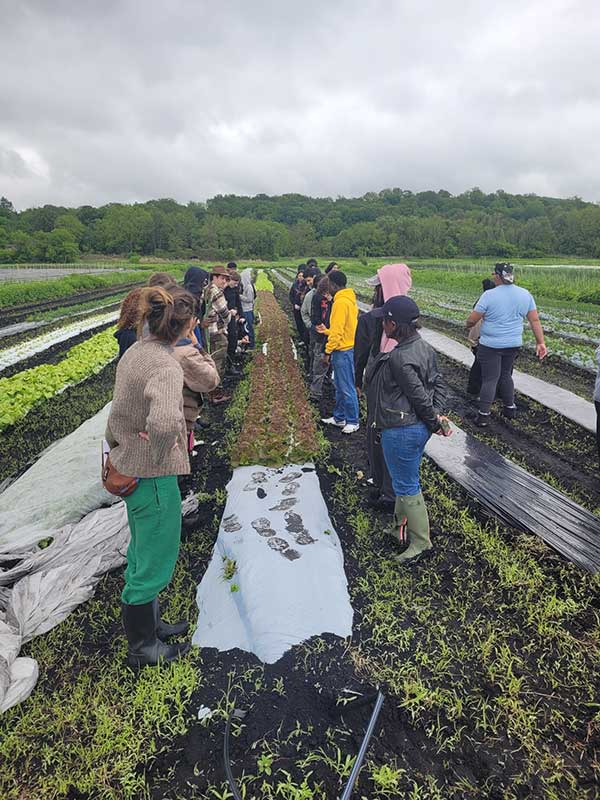
Introduction
After the Everglades in Florida, the Black Dirt region of New York and New Jersey is the largest accumulation of the rich, muckland soil type in the U.S., a stretch of earth covering about 26,000 acres. Such soil is also found in Poland, Ukraine, in parts of Canada and in several other states including Michigan.
These precious earth deposits date back thousands of years to when glaciers covered the region – in some areas a mile deep. According to Haysom, in her book Pride and Produce, when glaciers subsided about 12,000 years ago, some deposits formed “islands” of swamp lands. The vegetation would grow and then die back, ebb and flow with the seasons. Its decomposition was slowed by the lack of air in the wetland. Instead, breakdown came from the action of fungi and anaerobic bacteria, creating rich layers of organic matter. Some soil samples of Black Dirt show extraordinary levels of organic matter, 40-50%, and in some samples as much as 90%!
From First Nations stewards to colonial waves of immigrants, from “truck farmers” to First Generation young farmers, these lands have been bringing forth bringing great abundance, farmer livelihoods and fresh foods, for all human history.
Past
Reverence. For what the land brings each season, cada temporada es única. Black dirt, drowned lands.
The wet meadow lands of Chester were a source of plants used for food and medicine by the Lenape, and migratory waterfowl provided a source of food in season as the birds flew north and south. In Lenape communities, women were the primary farmers, tending the land while men hunted and fished. They cleared the land for agriculture, girdling trees by removing a strip of bark in a ring around the trunk. Over time, the wound would kill the tree, and it would fall. They also cleared land by burning.
The Lenape farmers—closest tribe to Chester was the “Minsi” or Minisink (which means wolf, to some, islands to others) tilled and cultivated small gardens, with sticks, honed stone hoes, or the shoulder blades of deer as the tools of the trade. The Lenape, and many other indigenous peoples domesticated many of the crops we eat today. Early European settlers mimicked the Lenape garden of corn with beans and squash vining around and up it. To the Haudenosaunee peoples, on land now known as northern New York, the Three Sisters were considered to be divine gifts. Some versions of their legends involve the crops personified as three women who separate from each other only to find out that they are stronger together.
“It is estimated that one-third of modern American agricultural products and practices may have originated with Native American farming innovators. How do we know this? Soil. Muck. Earth. An archaeologist can discern different periods by the color and striations of the soil, to determine when human activity may have been happening because artifacts tend to cluster together at different levels within the ground.
Colonization
In 1804, after British and Dutch settlement in the area, a New York State Assembly appointed a commission on how to go about draining the swamp, resulting in the long, narrow ditches that remain around the farm fields to this day. Settlement by the Irish grew as the Great Potato Famine of 1845-49 brought Irish workers to build the railroad (Pride and Produce 239); but most preferred the work they knew – farming. A need for more farm workers led Polish and Germans here too, who were facing persecution in their own countries. With the construction of the ditches, it was revealed that the sulfur-and nitrogen-rich soil was in some places 30 feet deep.
In the first part of the 20th century, shiny, round, pungent onions were mono-cropped, covering almost 100% of the muck lands at that time. Those legendary onions are now ubiquitous in the region. This period of intensification on the land gave rise to the “truck farmers” of the Black Dirt. With opportunities for high profits available in New York and Philadelphia, farmers transformed methods and production to meet urban demand, trucking produce into the cities to reach consumers directly and through wholesale channels.
Present
That trademark onion has since transformed into more diverse offerings of produce, from heirloom squashes and fresh lettuce, culturally relevant crops like fava bean greens, bok choy, papalo and fish pepper; to bunches of culinary herbs and seasonal flowers. The tri-state area of NYC, New Jersey and Connecticut, with a population of 20 million people, is described by Haysom as “the largest collective mouth in the whole U.S., presenting one of the world’s largest and wealthiest markets.” And yet, most American family farms have outside sources of income. In 2019, 96% of farm households nationwide derived some income from off the farm, according to USDA.
The farming practices of today’s Black Dirt farmers, at least here at Chester Agricultural Center, harken back to the innovations of our ancestors/producers to adopt organic farming practices was Guy Jones’s Blooming Hill Farm. The importance of organic, regenerative and sustainable farming methods remains steadfast in the wake of increased rain and flood events on the land.
The farmland at Chester Agricultural Center holds stories of great abundance.
Click here to view our Living Timeline.
We invite anyone with a history of this vital place and its many stewards to contribute to our living timeline.
Please contact info@chesteragcenterfarmstore.com to offer your knowledge.
Chester Agricultural Center creates and customizes training for further workforce development in the agricultural sector, for farmers by farmers. Our staff have 40 years of combined experience developing curriculum, facilitating workshops and offering education and technical assistance regionally. Our member farmers are educators too, offering on-farm events, workshops and trainings.
Check out our Member Farms page for more information on each farm.
We host events, farm tours and offer hands-on farmer training opportunities on our 270 acres of farmland. If you are interested in hosting an educational event at the Chester Agricultural Center, please connect with us here!

High School for Environmental Studies Field Trip to CAC, at Choy Division Farm (Spring 2025)
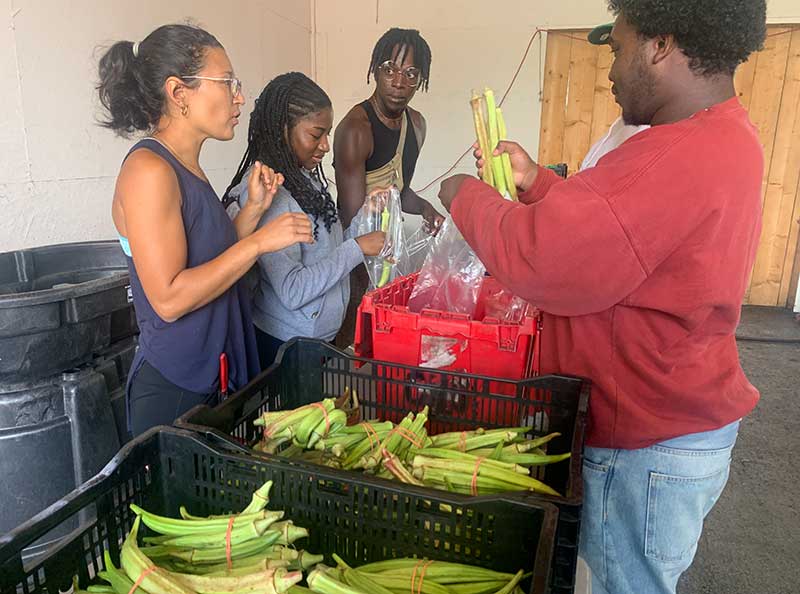
Equity in Conservation, Little Gem Farm & Our Core Youth (Summer 2024)
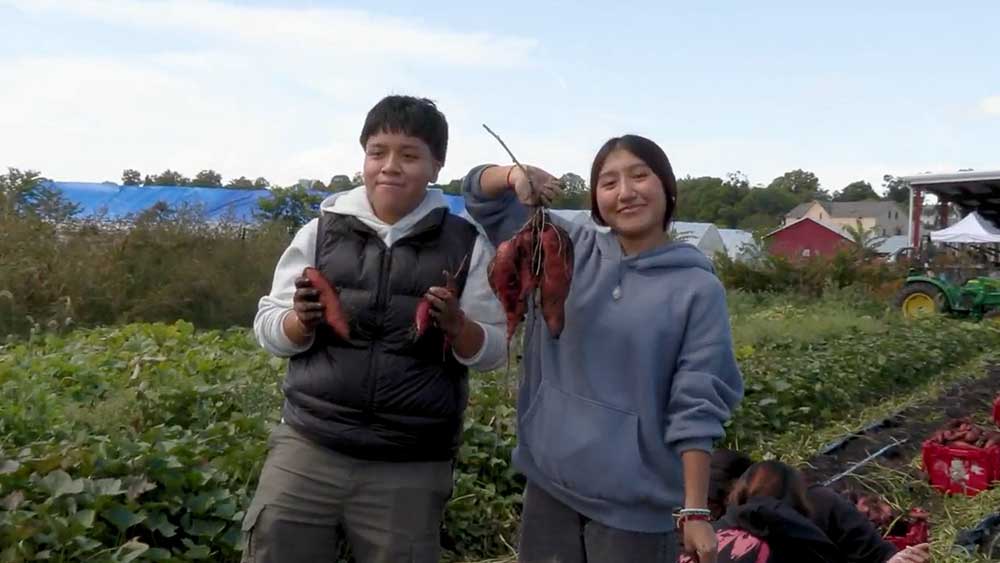
Academy for Careers in Television and Film Students hold up freshly harvested sweet potatoes from Choy Division Farm (Fall 2024)
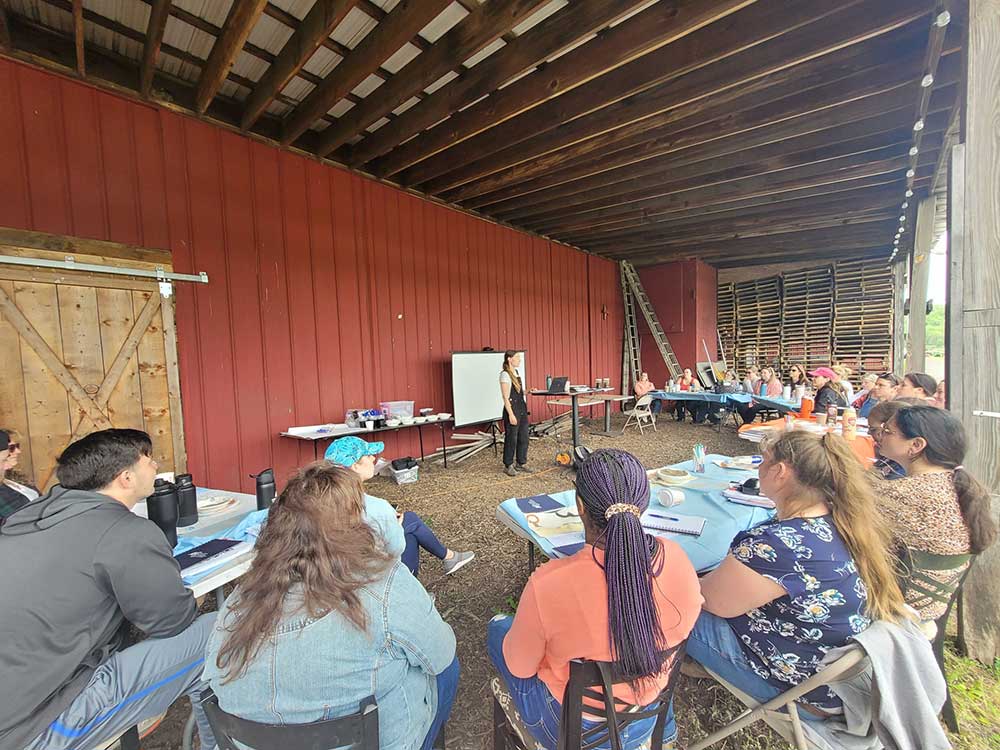
Cornell University’s Ag in the Classroom teacher professional development training (Spring 2024)
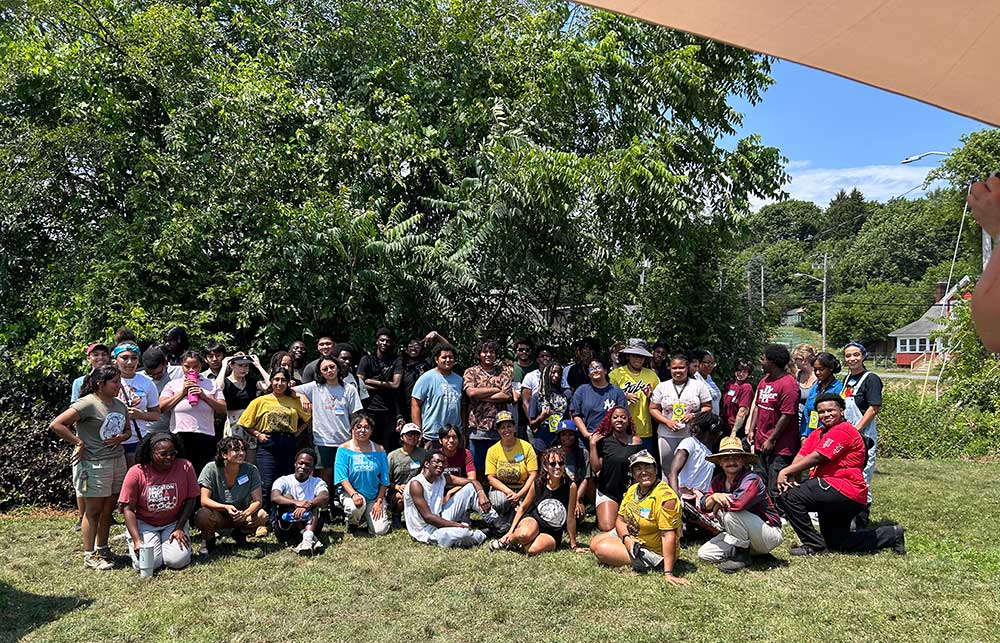
2024 JAM Sustainable Agriculture Youth Conference (July 2024) Photo credit: Susan Hereth
Academy of Career in Television & Film (ACTVF) Recap of Field Trip to Chester Ag Center (2024)
In 2024-2025, we partnered with the following amazing organizations to offer education and training: